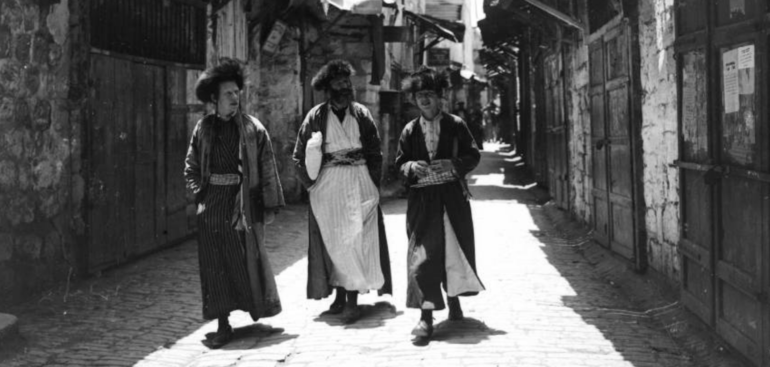
Hats and Yarmulkes: A Visual Guide To Orthodox Jewish Men’s Head Coverings
While we have previously discussed why Orthodox Jewish men wear yarmulkes (kippahs), and why many also wear hats, not all hats and yarmulkes look the same, and the differences in appearance can be puzzling to outsiders (and frankly even to Orthodox Jews in other groups!) Please use our handy visual guide to understanding Orthodox Jewish men’s head coverings. This post highlighting the different communities described below may also be helpful. (Editor’s note: We are sure that not everyone fits into the boxes we describe below and that someone will disagree with something we said (hey, we’re Jewish!) but we did our best to explain these differences as we understand them. If you have another perspective, feel free to add your point of view in the comments below.)
Pinched Hats
Fedora Hat
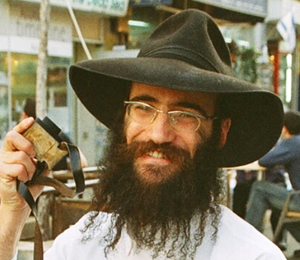 These hats are a standard both in the yeshivish as well as the Lubavitch communities. The flattened pushed-down brim (some describe it as a “crushed” look) is typical of Lubavitch, who often also tend to wear their beards long at any age. A shorter, straighter brim alongside a shorter beard can often indicate that the fedora wearer is someone from the Yeshivish community or the right-wing Modern Orthodox community. (But modern Orthodox men who wear black hats only do so on Shabbos.)
These hats are a standard both in the yeshivish as well as the Lubavitch communities. The flattened pushed-down brim (some describe it as a “crushed” look) is typical of Lubavitch, who often also tend to wear their beards long at any age. A shorter, straighter brim alongside a shorter beard can often indicate that the fedora wearer is someone from the Yeshivish community or the right-wing Modern Orthodox community. (But modern Orthodox men who wear black hats only do so on Shabbos.)
Trilby Hat
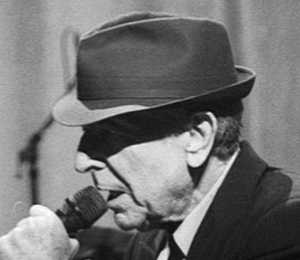 Traditionally made from rabbit fur, these hats were once strongly identified with Frank Sinatra, Inspector Clouseau and Leonard Cohen (pictured). While some pair these hats with the “balebatish” Yeshivish community, they have risen in popularity in the last few years and are the new “in” hat amongst bar mitzvah boys in the Yeshivish community and some in the hipster Lubavitch or Hasidic communities.
Traditionally made from rabbit fur, these hats were once strongly identified with Frank Sinatra, Inspector Clouseau and Leonard Cohen (pictured). While some pair these hats with the “balebatish” Yeshivish community, they have risen in popularity in the last few years and are the new “in” hat amongst bar mitzvah boys in the Yeshivish community and some in the hipster Lubavitch or Hasidic communities.
Non-Pinched Hats
Kashket
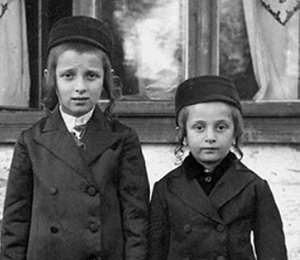 As popularized by Feivel in An American Tail and Tevye in Fiddler on the Roof, this felt cap was once a mainstay for religious Jewish men but fell out of favor. A felt cap worn mostly by Hasidic children on Shabbos, it is a more stylized version of a “newsboy” cap. While popular among adults before WWII, it is now restricted to mostly youthful wearers.
As popularized by Feivel in An American Tail and Tevye in Fiddler on the Roof, this felt cap was once a mainstay for religious Jewish men but fell out of favor. A felt cap worn mostly by Hasidic children on Shabbos, it is a more stylized version of a “newsboy” cap. While popular among adults before WWII, it is now restricted to mostly youthful wearers.
Biber Hats
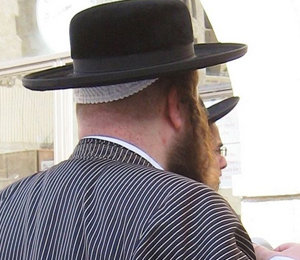 Worn by Hasidic Jews on weekdays (Shabbos, Holidays and weddings are for Shtreimels), Biber (Beaver) hats can be smooth or textured and high or flat (flat being the style worn by Satmar). This style is considered a “flat style” for Hasidic weekday wear, as opposed to the hoiche/high style favored by more branches of Chassidus.
Worn by Hasidic Jews on weekdays (Shabbos, Holidays and weddings are for Shtreimels), Biber (Beaver) hats can be smooth or textured and high or flat (flat being the style worn by Satmar). This style is considered a “flat style” for Hasidic weekday wear, as opposed to the hoiche/high style favored by more branches of Chassidus.
Hoiche Hat
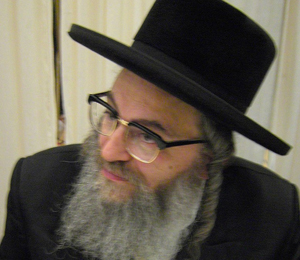 This Hoiche (High) crown weekday style is worn mostly by Hasidic Jews from all different courts, but can also be worn by Rosh Yeshiva in the Heimishe and Yeshivish worlds. Similar to the Biber hats above, they can also have a more felt or furry texture, with felt being more predominant.
This Hoiche (High) crown weekday style is worn mostly by Hasidic Jews from all different courts, but can also be worn by Rosh Yeshiva in the Heimishe and Yeshivish worlds. Similar to the Biber hats above, they can also have a more felt or furry texture, with felt being more predominant.
Fur Hats
Shtreimel
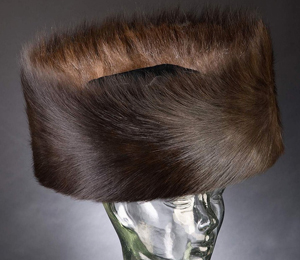 These stereotypically Hasidic hats are worn by married men on Shabbos, Holidays and other festive occasions such as at weddings and minor festivals. In some communities, boys from bar mitzvah age wear them, as do some Litvish Jews in Jerusalem, who are called Yerushalmim. Hasidic Jews adopted the style from nobles in their home countries of Galicia, Hungary and Poland
These stereotypically Hasidic hats are worn by married men on Shabbos, Holidays and other festive occasions such as at weddings and minor festivals. In some communities, boys from bar mitzvah age wear them, as do some Litvish Jews in Jerusalem, who are called Yerushalmim. Hasidic Jews adopted the style from nobles in their home countries of Galicia, Hungary and Poland
Spodik
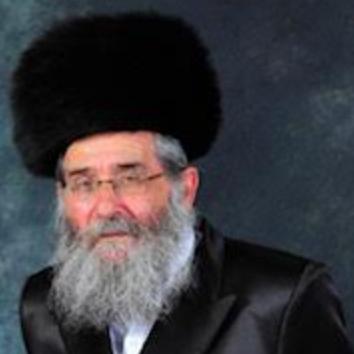 A tall fur hat worn by Polish Hasidic Jews, these are even taller than Shtreimels. Sometimes appearing more natural than the highly-stylized shtreimel, which are rounder, wider and shorter. According to Wikipedia, Spodiks are worn by Hasidic groups including Alexander, Amshinov, Ashlag, Gur, Kotzk, Lublin, Modzitz, Ozrov-Henzin, and Radzin.
A tall fur hat worn by Polish Hasidic Jews, these are even taller than Shtreimels. Sometimes appearing more natural than the highly-stylized shtreimel, which are rounder, wider and shorter. According to Wikipedia, Spodiks are worn by Hasidic groups including Alexander, Amshinov, Ashlag, Gur, Kotzk, Lublin, Modzitz, Ozrov-Henzin, and Radzin.
Yarmulkes / Kippahs
Black Velvet Yarmulke
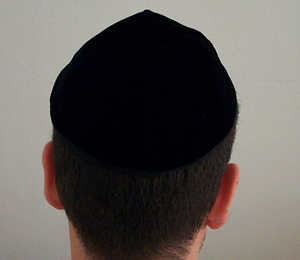 This common head covering can range from the creative (painted or embroidered as seen on young children), oversize (as seen on rabbis and Hasidic men) and others. A standard in the Haredi community, they are also worn by some Modern Orthodox and Centrist Orthodox Jews. (Suede Yarmulkes are also common among Modern and Centrist Orthodox Jews). Haredi schoolchildren sometimes wear velvet in navy, gray, brown, burgundy and green.
This common head covering can range from the creative (painted or embroidered as seen on young children), oversize (as seen on rabbis and Hasidic men) and others. A standard in the Haredi community, they are also worn by some Modern Orthodox and Centrist Orthodox Jews. (Suede Yarmulkes are also common among Modern and Centrist Orthodox Jews). Haredi schoolchildren sometimes wear velvet in navy, gray, brown, burgundy and green.
Colorful Knitted Yarmulke
 These Modern Orthodox or Dati Leumi staples are usually crocheted into a pattern, but can also include phrases, team logos or be plain black (a sign of the CharDal community in Israel or Centrist in America). While fabric kippahs are now standard in both the Haredi and Modern communities, fabrics range from colorful velvet to burlap to corduroy.
These Modern Orthodox or Dati Leumi staples are usually crocheted into a pattern, but can also include phrases, team logos or be plain black (a sign of the CharDal community in Israel or Centrist in America). While fabric kippahs are now standard in both the Haredi and Modern communities, fabrics range from colorful velvet to burlap to corduroy.
Bucharian Yarmulke
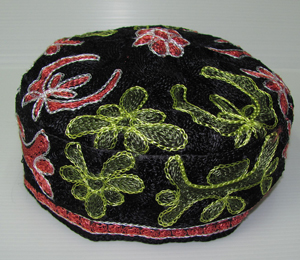 These oversize black kippahs are very structured (almost like a pillbox hat) and often show colorful embroidery across them in floral or botanical patterns. They are worn in the Sefardi/Bucharian community as well as in the Modern Orthodox community. Sometimes children from out-of-town Lubavitch and rabbis from other Jewish streams wear them as well.
These oversize black kippahs are very structured (almost like a pillbox hat) and often show colorful embroidery across them in floral or botanical patterns. They are worn in the Sefardi/Bucharian community as well as in the Modern Orthodox community. Sometimes children from out-of-town Lubavitch and rabbis from other Jewish streams wear them as well.
Breslov Kippah/Yerushalmi
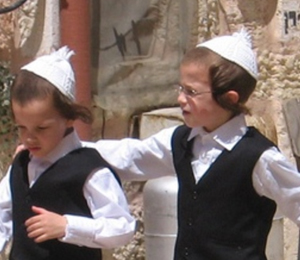 These white, knitted or crocheted kippahs are sometimes plain white and round (such as seen on Yerushalmi Hasidish and Dati Leumi Jews on Shabbos), while Breslov Hasidim wear them in a more pointed style, such as seen on these children. The fringe on top keeps them visually close to the Na Nach style, appropriate considering their shared Breslov roots.
These white, knitted or crocheted kippahs are sometimes plain white and round (such as seen on Yerushalmi Hasidish and Dati Leumi Jews on Shabbos), while Breslov Hasidim wear them in a more pointed style, such as seen on these children. The fringe on top keeps them visually close to the Na Nach style, appropriate considering their shared Breslov roots.
Na Nach Yarmulke
 While Breslov Hasidic Jews are known for wearing all-white knit kippahs, Na Nach Breslovers wear ones with “Na Nach Nachman MeUman” stitched into them. This is based on a letter received by Breslover Rabbi Yisroel Ber Odesser on which the cryptic kabbalistic phrase appeared. It became a chant and mantra for the group, which they popularized on everything from bumper stickers to kippahs like these.
While Breslov Hasidic Jews are known for wearing all-white knit kippahs, Na Nach Breslovers wear ones with “Na Nach Nachman MeUman” stitched into them. This is based on a letter received by Breslover Rabbi Yisroel Ber Odesser on which the cryptic kabbalistic phrase appeared. It became a chant and mantra for the group, which they popularized on everything from bumper stickers to kippahs like these.
This article was sponsored by Exhilaread, a thrilling journey to literacy.
If you found this content meaningful and want to help further our mission through our Keter, Makom, and Tikun branches, please consider becoming a Change Maker today.





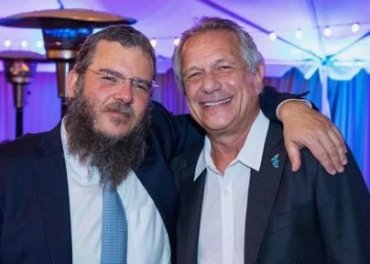


18 comments
Sort by
What about iKippahs?
Spodiks are mostly worn by the Ger Chassidic community. They basically look like shtreimels with short tufty black fur. They are cheaper than shtreimels.
Not just Ger- Amshinov, Alexander, Sochotchov also wear spodiks. And YES- they are a lot cheaper than streimels and taller- so you get more for your money!
may i ask why the Jews often wear hats that seem too small. Stand on top of their head?
Thanks for your question, Anna. It’s a style. Just like baseball caps have had different ways they are worn – curved front or flat front, this is the headgear of this community. While everyone looks the same to an outsider, insiders can see the nuanced differences of what hat is worn and how it’s worn.
what is the best place in Los angeles to buy a Hoiche Hat
They are called kippas or yarmulkes. It’s the basic head covering they only cover the very top of the head.
Kippahs are not hats. Anna was asking about hats.
To clarify, just as in Scotland, each clan, by the Victorian era had its own style and colour of tartan so that community members could spot each other quickly, as could other clans.
Also, they’d have “dress” tartans for special events, and a more rustic hunting tartan for through the week .
Although, in Judaism, it doesn’t denote family clans as such, to wear particular hats, it does denote which sect, or sun-sect you belong to.
It’s such a shame many cultures have lost their equivalents as it is one of the beautiful things about the cultures of our Earth.
My grandfather, a rabbi, wore a tall, white kippah only on Yom Kippur, along with an ornate white gown (more than a regular kittel.) Specific name for this type of head covering??
My father wore one and called it a “hoibel”.
Some others that I’d add:
1) The terylene yarmulka: a common alternative to velvet among yeshivish men.
2) The “up-hat” (there’s probably a better name): Same material as a regular borsalino-type fedora except the brim is not bent down, and the crown is round with no pinches (or very subtle pinches). Worn by:
– the main characters in Shtisel
– “Haymish” (quasi-chassidic) guys
– more typical among polish chassidim as opposed to the beaver-fur material of Hungarian chassidic hats. Although many Satmars wear a variant of this type as well (tall crown, smooth material, and a thin straight brim bordered by a hard plastic edge).
Another note: I do see chassidic boys wearing their kashkets during the week (not only on shabbos), as part of their school attire.
The current Rebbe of Belz instituted the custom for boys between 13 and around 15 to wear a kashket during the weekdays (while keeping the biber hat for Shabbos), as a way to ease the financial burden on the parents. A biber hat costs around $150 and is very delicate. Younger boys tend to go through 3-4 such hats in those first years, making it very costly. The kashket only runs about $30-50, and so is much more affordable during that time. When the boys get a bit older and more mature, they are usually better at taking care of their hats, and so they graduate to a standard biber hat for weekdays as well.
As a gentile, I have put a yarmulka on if I attend a service in temple. Is that proper etiquette?
Yes
Surprised that the list of hats didn’t include a black Homburg.
The hat was popularized by Winston Churchill, but today is common (at least in Israel) for a Rosh Yeshiva or Chief Rabbi, normally accompanied by a Frock Coat
Why do Jewish people bounce when praying they seem to be quickly moving to and fro while praying they just don’t stand still, I usually see this while they pray at the wailing wall, I think this would be most distracting while trying to pray, I’ve asked several Jewish friends about this and no one can give me an answer
We covered this question in a different post
https://jewinthecity.com/2021/05/why-do-orthodox-jews-rock-when-they-pray/
Would jewish people be offended by a non-jew wearing a biber hat? I really like the style but I don’t want to offend.